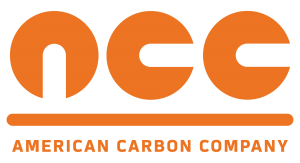As with any product defining the specification of different grades is paramount to a successful material application. There are many different types of steel, and each one has a different function and application – from the basic 4 of carbon, alloy, tool and stainless, the list is split into even smaller subcategories. The same is true in practice for graphene – but not in technical terms. As of June 2016 there is no universally standard for graphene material definition [although the National Physical Laboratory (NPL) is currently working to correct this]. This lack of scientific clarity can make for a precarious situation for a buyer. And since graphene is measured on the nano scale, confirming sales literature can be difficult with a quick review. Therefore with all of the graphene producers globally it is critical to find one that you trust to provide graphene or graphene enhanced products as described. In order to set a baseline, American Carbon utilizes definitions set out by the Carbon Journal (full journal article here) which is outlined below.
In its purest, most precise form, graphene is defined as a single atom thick sheet of sp2-bonded carbon atoms arranged in a hexagonal pattern. This is monolayer graphene and as American Carbon views it the only true “graphene”. That being said, there are many related orientations that are shown in the table below that are neither as difficult or as costly to produce but still exhibit some very advantageous attributes.
| Naming Convention | Number of Layers | Description | Anticipated Uses |
| Monolayer Graphene | 1 | single atom thick sheet of hexagonally arranged carbon atoms. lateral dimensions are not relevant | touch screens, transparent conductive films, nanoelectronics |
| Few-layer Graphene (FLG) | 2-5 | stacked graphene layers of similar lateral dimensions | sensors, batteries, coatings, nanoelectronics |
| Multi-layer Graphene (MLG) | 2-10 | same as FLG but with a larger deviation of layers | conductive inks; lubricants; additive material to plastics, composites, etc |
| Graphene NanoPlatelets (GNP) | >10 | 2D graphite material with thickness and/or laterial dimensions less than 100 nm | conductive inks; lubricants; additive material to plastics, composites, etc |
| Reduced Graphene Oxide (rGO) | NA | similar to GO below but reduced C/O atom ratio | more stable than GO, but still changed under conductance |
| Graphene Oxide (GO) | NA | modified graphene with C/O atom ratio between 3.0 and 2.0 | extremely conductive, however loses oxide each time conductivity occurs |
Just as you wouldn’t use stainless steel in structural applications (carbon steel would be the steel of choice), you wouldn’t use Graphene Oxide or Multi-layer Graphene as a anode in a battery cell – the results would be disastrous. And why pay the premium of Monolayer Graphene when Multi-layer Graphene will provide nearly the same advantages as a fraction of the cost. Choosing the correct Graphene grade (and ensuring it is as advertised) is the most critical step to a successful Graphene application. Let American Carbon help you determine how to best utilize graphene in your specific application, or follow the links on the left to a number of different projects we are working on independently.
